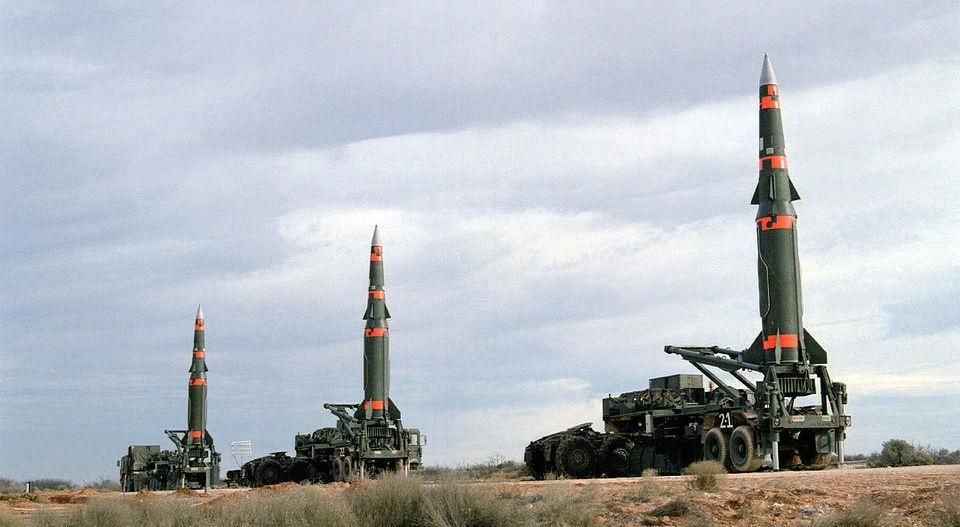Uncategorized, Weapons
The Cutting-Edge Arsenal of the US Military
The Cutting-Edge Arsenal of the US Military
Introduction
The United States Armed Forces have always been at the forefront of technological advancements in weaponry. With a focus on maintaining military superiority, the US military is continuously developing state-of-the-art weapons that are both awe-inspiring and terrifyingly powerful. These advanced weapons systems are the result of rigorous research, innovation, and investment in cutting-edge technology.
1. Railgun Technology
Railgun technology is an exciting breakthrough in long-range weaponry. Instead of using traditional gunpowder-based propulsion systems, railguns utilize electromagnetic forces to launch projectiles at hypersonic speeds. The projectiles, also known as “hypervelocity kinetic energy rounds,” can travel at speeds of Mach 7 or more, allowing them to strike targets hundreds of miles away with unparalleled accuracy and destructive power.
The US Navy has been a pioneer in developing railgun technology, envisioning its integration into the future fleet. The railgun’s potential lies in its ability to neutralize enemy ships, aircraft, and even land-based targets with tremendous force and range, significantly expanding the US military’s operational capabilities.
2. Directed Energy Weapons (DEWs)
Directed Energy Weapons are a category of futuristic weapons that utilize focused energy beams, such as lasers and microwave emitters, to disable or destroy enemy threats. One of the primary advantages of DEWs is their incredible speed-of-light targeting, making them nearly instantaneous and highly precise.
Laser weapons, in particular, have shown immense potential in countering threats like enemy drones, rockets, and mortar rounds. The US military has been testing high-energy laser systems on various platforms, including aircraft and ground-based vehicles. These weapons not only provide a cost-effective solution but also reduce collateral damage compared to traditional munitions.
3. Hypersonic Missiles
Hypersonic missiles are a game-changer in the field of missile technology. These missiles can reach speeds of Mach 5 or higher, allowing them to cover vast distances in a short time frame. Unlike subsonic or supersonic missiles, hypersonic missiles are challenging to intercept due to their extreme speed and unpredictable flight patterns.
The US military has been investing heavily in hypersonic missile development to enhance its strike capabilities. These missiles can be used for both conventional and nuclear warfare, offering the ability to engage time-sensitive targets and penetrate heavily defended regions. The ongoing research and testing aim to make hypersonic missiles a significant component of the US military’s deterrence and defense strategy.
4. Unmanned Combat Vehicles (UCVs)
Unmanned Combat Vehicles, also known as drones or robotic systems, have revolutionized modern warfare. These vehicles can operate autonomously or be remotely controlled by operators, allowing the US military to conduct a wide range of missions without risking human lives.
From small quadcopter-sized reconnaissance drones to large armed UAVs (Unmanned Aerial Vehicles), the US military has deployed UCVs in various combat scenarios. These vehicles provide real-time intelligence, surveillance, and reconnaissance capabilities, while armed drones can conduct precision strikes on high-value targets. The use of UCVs significantly extends the US military’s reach and operational flexibility on the battlefield.
5. Next-Generation Fighter Jets
Next-generation fighter jets, such as the F-35 Lightning II, are the epitome of advanced military aviation. These aircraft are designed to excel in multiple roles, including air-to-air combat, air-to-ground strikes, and intelligence gathering.
The F-35 is a fifth-generation stealth fighter equipped with cutting-edge avionics and sensor systems. Its low observability features allow it to operate undetected in hostile airspace, while its advanced radar and data fusion capabilities provide unparalleled situational awareness. The US military’s focus on these advanced fighter jets ensures air superiority and dominance in contested environments, reinforcing its commitment to maintain control of the skies.
6. Autonomous Weapons Systems
Autonomous weapons systems represent a significant leap forward in military technology. These systems use artificial intelligence (AI) algorithms to analyze data, identify potential targets, and make decisions without direct human intervention.
While autonomous weapons have the potential to revolutionize warfare by increasing the speed and efficiency of decision-making, there are significant ethical and legal concerns. The US military is cautious in their use, ensuring compliance with international law and adherence to strict guidelines for responsible autonomous systems. The development and deployment of these systems are continually monitored to mitigate potential risks and ensure human oversight in critical operations.
Conclusion
The US military’s commitment to technological advancement ensures that it remains a dominant force in modern warfare. The weapons mentioned in this article are just a glimpse of the impressive firepower the US military is developing to protect its national interests and maintain global security.
From railguns and directed energy weapons to hypersonic missiles and unmanned combat vehicles, these cutting-edge systems offer significant advantages in terms of range, precision, and reduced risk to human personnel. As these advanced weapons systems become operational and integrated into military strategy, they will undoubtedly shape the future of warfare and redefine the nature of armed conflicts.


